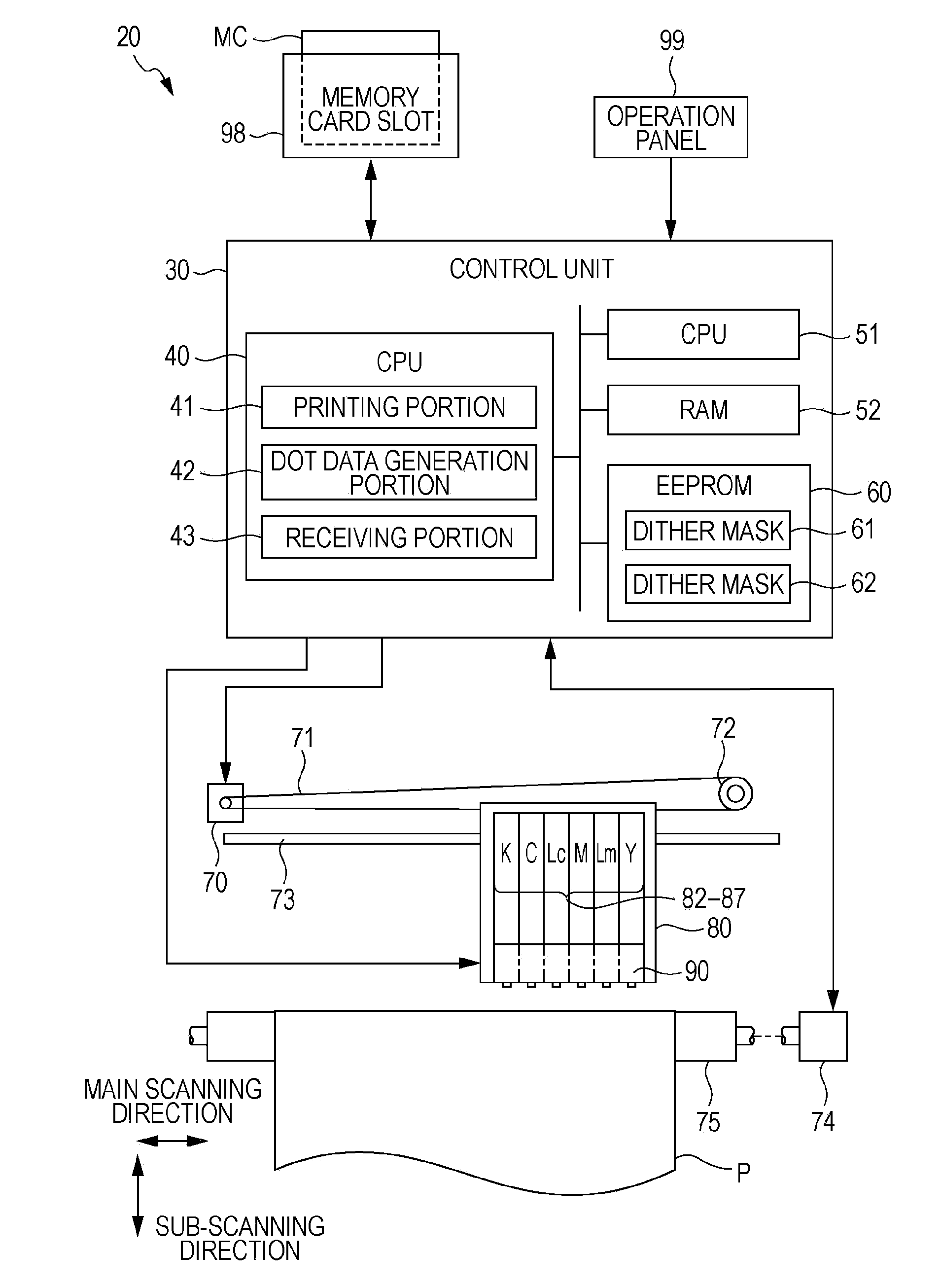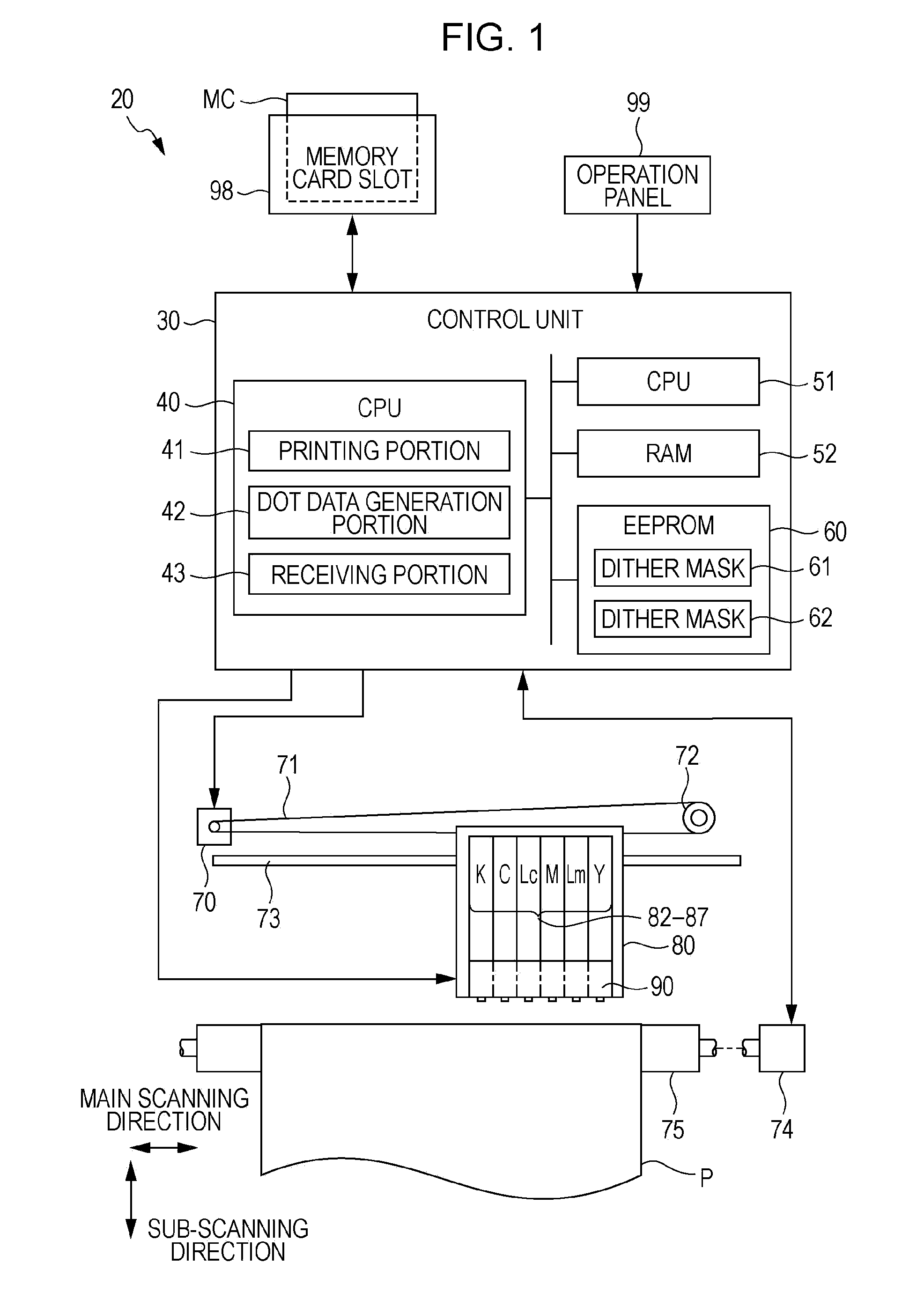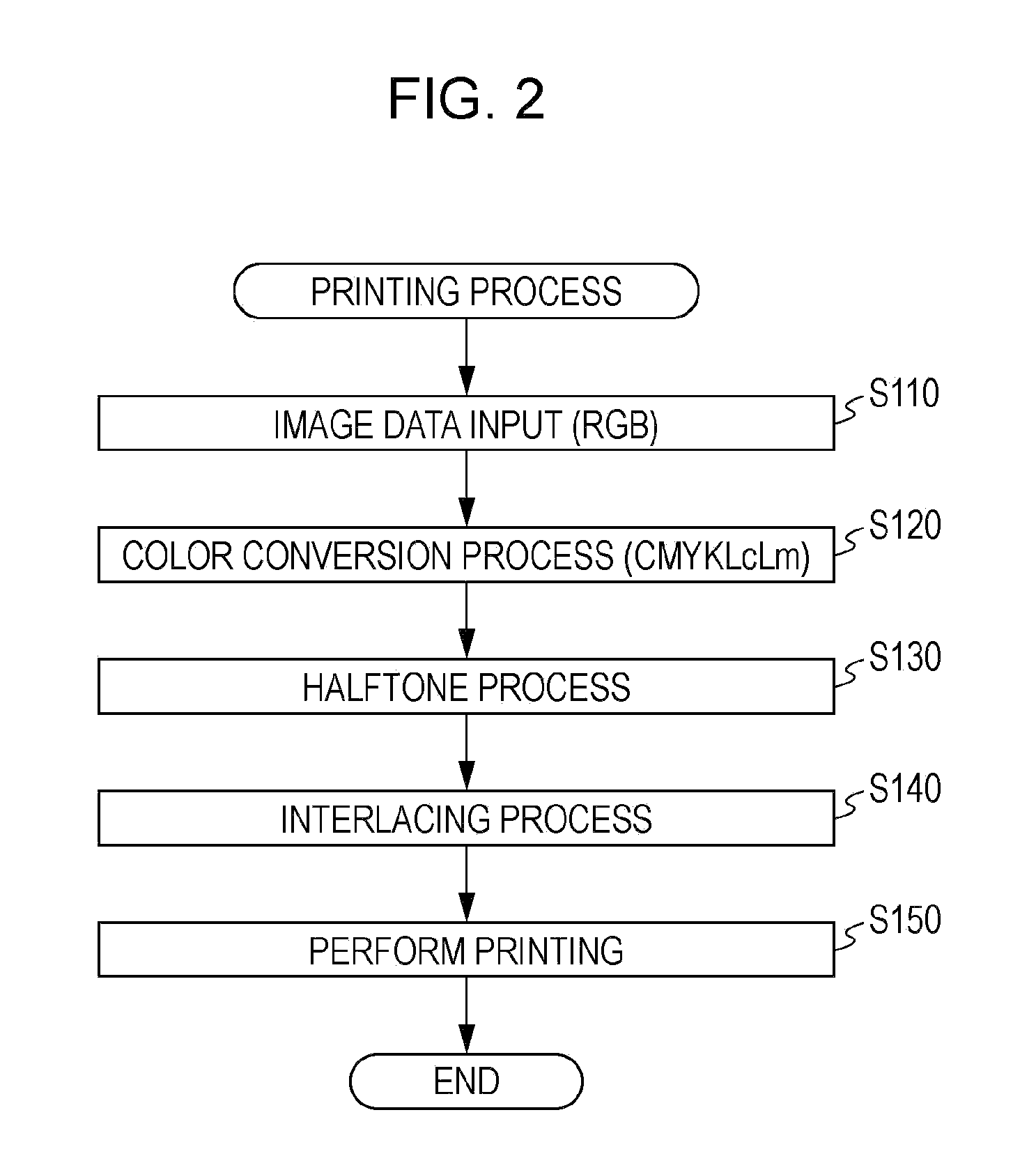Printing apparatus, printing method, printing data generation program, and dither mask generation method
a printing apparatus and mask technology, applied in the field of printing apparatus, can solve the problems of paper feeding accuracy, deterioration of printing quality, and deterioration of operation accuracy of printing head, and achieve the effect of suppressing variations in printing image quality, favorable blue noise characteristic, and suppressing the variation of dot covering ratio
- Summary
- Abstract
- Description
- Claims
- Application Information
AI Technical Summary
Benefits of technology
Problems solved by technology
Method used
Image
Examples
modified example 1
B-1. Modified Example 1
[0122]In the above-described embodiment, in step S231, the pixel groups of a printing image are divided into a pixel group formed by the outward movement dots and a pixel group formed by the inward movement dot, and the dither mask 62 is generated by shifting threshold values corresponding to any one of the pixel groups by predetermined pixels in a predetermined direction with respect to the threshold value disposition of the dither mask 61. However, the divided pixel groups are not limited to the above-described example, and may be pixel groups having different printing conditions.
[0123]For example, in a case where an image of a predetermined region is printed through a plurality of main scannings of the printing head 90, pixel groups of the printing image may be divided into pixel groups where dots are formed by different main scannings of the plurality of main scannings. For example, the attention region shown in FIG. 3 is formed through repetition of regio...
modified example 2
B-2. Modified Example 2
[0124]Although the evaluation values E are calculated in the overall printing grayscale range and the threshold value disposition of the dither mask 61 is determined in the above-described embodiment, threshold value disposition may be determined based on evaluation values E in a part of the printing grayscale range. For example, in a high grayscale printing region where dot dispersibility is not greatly problematic, threshold value disposition of the dither mask 61 may be set by other methods.
modified example 3
B-3. Modified Example 3
[0125]Although the dither mask 61 and the dither mask 62 are stored in the EEPROM 60 in advance in the above-described embodiment, the invention is not limited thereto. For example, either the dither mask 61 or the dither mask 62 may be stored in the EEPROM 60 in advance. In this case, the CPU 40 may function as a dither mask generation portion, and may generate the other dither mask from one of the dither mask 61 and the dither mask 62. Of course, in the halftone process, a dither mask is not necessarily selected depending on the kind of printing medium, but the printer 20 may store only the dither mask 62 and use the dither mask 62 in a fixed manner regardless of the kind of printing medium, or may change and use a dither mask different from the dither mask 61, and the dither mask 62.
PUM
 Login to View More
Login to View More Abstract
Description
Claims
Application Information
 Login to View More
Login to View More - R&D
- Intellectual Property
- Life Sciences
- Materials
- Tech Scout
- Unparalleled Data Quality
- Higher Quality Content
- 60% Fewer Hallucinations
Browse by: Latest US Patents, China's latest patents, Technical Efficacy Thesaurus, Application Domain, Technology Topic, Popular Technical Reports.
© 2025 PatSnap. All rights reserved.Legal|Privacy policy|Modern Slavery Act Transparency Statement|Sitemap|About US| Contact US: help@patsnap.com



